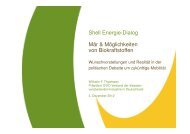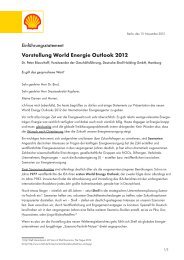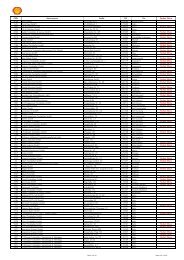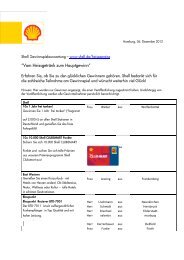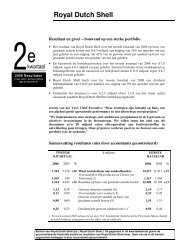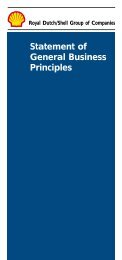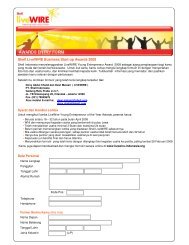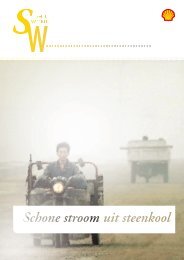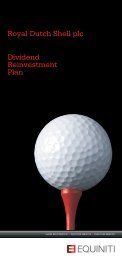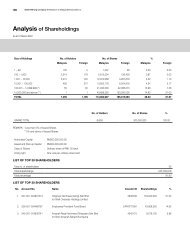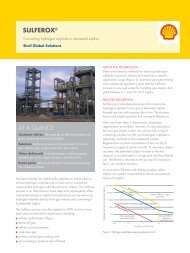ENVIRONMENTAL STATEMENT BARDOLINO DEVELOPMENT
ENVIRONMENTAL STATEMENT BARDOLINO DEVELOPMENT
ENVIRONMENTAL STATEMENT BARDOLINO DEVELOPMENT
Create successful ePaper yourself
Turn your PDF publications into a flip-book with our unique Google optimized e-Paper software.
Bardolino Development Environmental Statement<br />
Figure 6.10: Deterministic modelling results for the instantaneous release of 50 m 3 of<br />
crude oil (dark blue lines indicate territorial boundaries)<br />
Figure 6.10 shows the results from the deterministic modelling of an instantaneous 50 m 3<br />
spill of crude oil. Under these conditions, modelling indicates that approximately 75 hours<br />
after release all of the oil would have dispersed naturally, and no crude oil would be expected<br />
to beach.<br />
6.9.3 Impact on sensitive receptors and proposed or designated sites<br />
The potential risk to birds from oil and diesel pollution is through damage to feathers resulting<br />
in loss of mobility, buoyancy, insulation and waterproofing. Birds may also be at risk from<br />
toxicity through ingestion of hydrocarbons and may face starvation through depletion of food<br />
sources. The birds most affected are those, such as guillemots, razorbills and puffins, that<br />
spend large amounts of their time on the water, particularly during the moulting season when<br />
they become flightless (DTI, 2001).<br />
Seabird vulnerability to oil pollution in the Bardolino area is “high” to “very high” during July,<br />
September, October and November, with “moderate” to “low” seabird vulnerability for the<br />
remainder of the year (JNCC, 1999; Section 4.4.5). High seabird vulnerability is attributable<br />
to the high numbers of guillemot and little auk in this part of the central North Sea (UKDMAP,<br />
1998). The Bardolino development activities are scheduled to occur between February and<br />
August 2009, which coincides with periods of high seabird vulnerability. The potential impact<br />
on seabirds is considered to be minimal, however, because the likely spills would be of diesel<br />
rather than crude oil, and any spilled diesel would be rapidly dispersed offshore.<br />
Major oil spills can result in direct mortality to marine mammals, although, generally, they are<br />
less vulnerable than seabirds to fouling by oil. Cetaceans have smooth hairless skins over a<br />
thick layer of insulating blubber, so oil is unlikely to adhere persistently or cause a breakdown<br />
in insulation. However, they are at risk from chemicals evaporating from the surface of an oil<br />
slick at sea, especially within the first few days; they may inhale vapours given off by spilt oil<br />
and their eyes may be vulnerable to major pollution, and individuals may drown as a result of<br />
associated symptoms. Neonatal (very young) seal pups are particularly at risk from oil<br />
coming ashore. In addition, a major release of oil or diesel may deplete marine mammals’<br />
food supply (SMRU, 2001).<br />
April 2008 Page 6-39


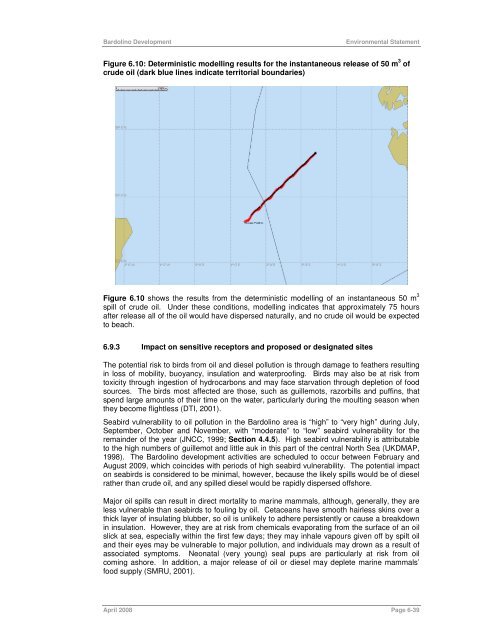
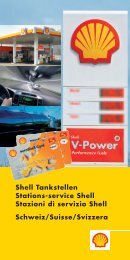
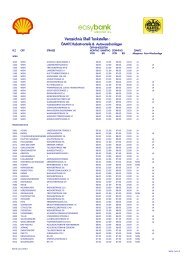
![Download Shell AutoGas Stationen [Stand: Januar 2013] (PDF](https://img.yumpu.com/9982753/1/190x245/download-shell-autogas-stationen-stand-januar-2013-pdf.jpg?quality=85)
